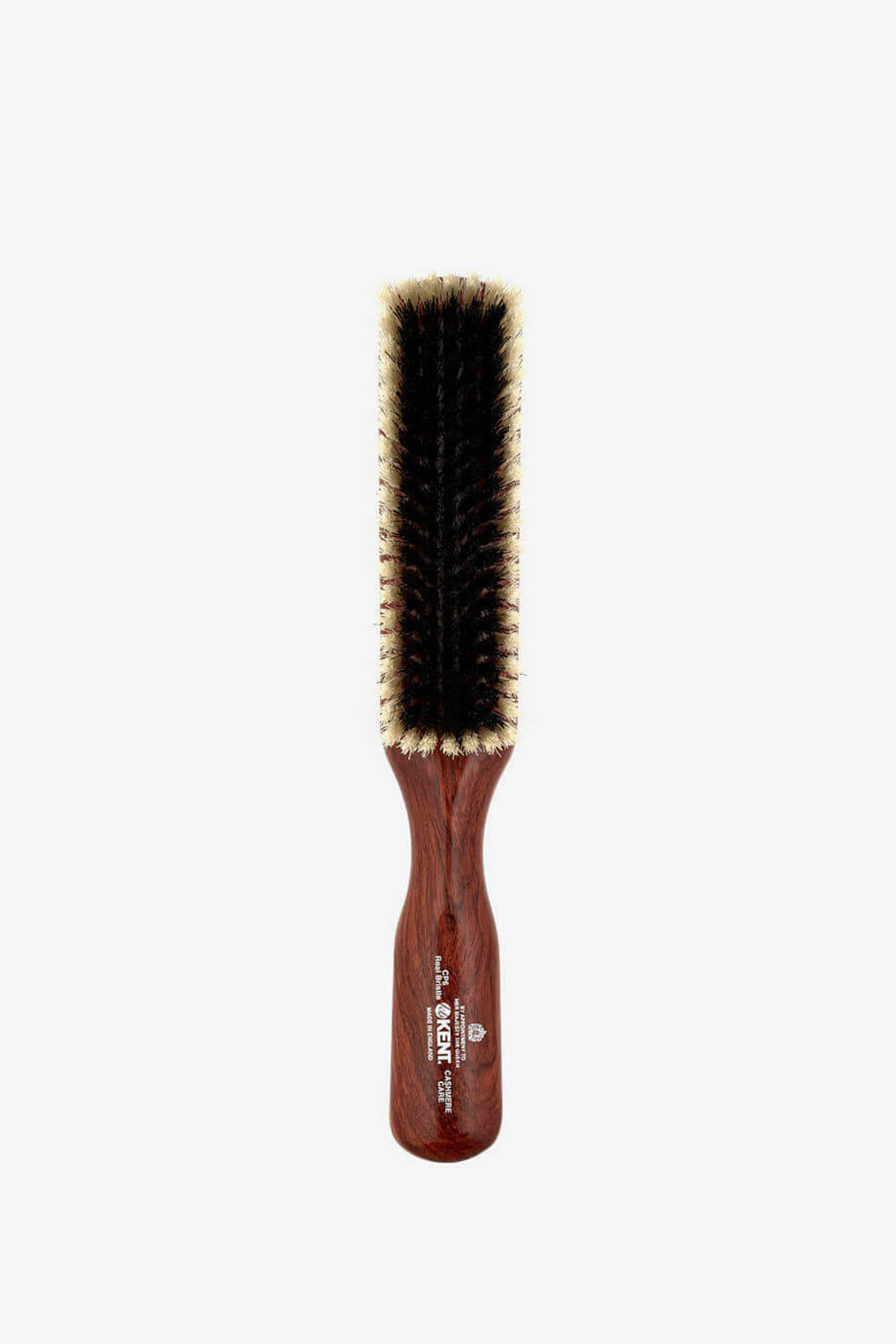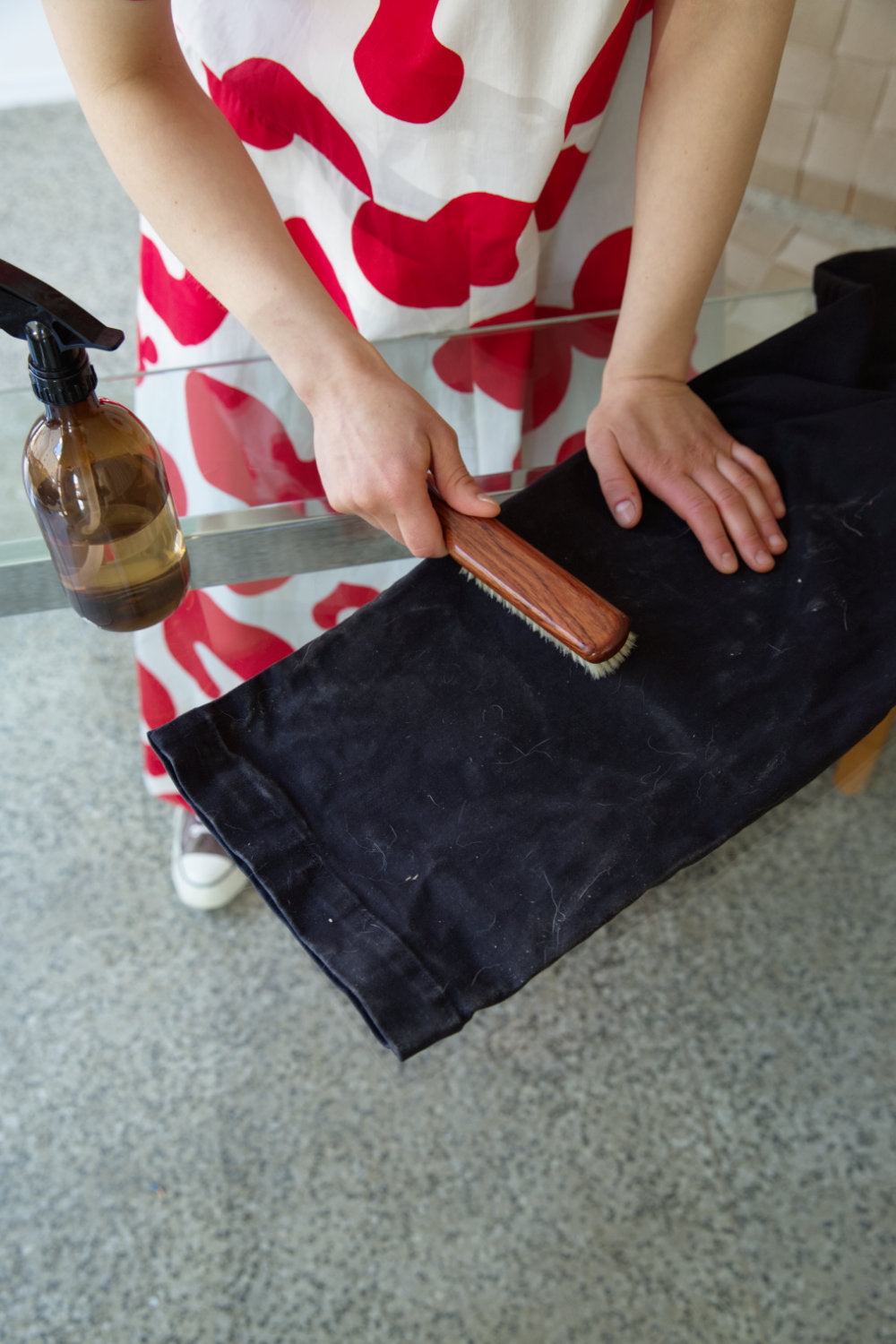Compared to other European countries, the percentage of clothing in the total consumption in Finland is smaller than average. This is especially seen in shoe consumption; the statistics show that Finns are at the end of the curve.
More and more western citizens have already lived the peak of their fashion-consuming years, and want to be more prudent about what is actually needed.
Recycling clothes, as well as supply and demand of second hand, are increasing. Service concepts for used clothing, such as fashion rentals, are favored over buying new clothes.

How to deal with textile waste?
In every household there is some ragged clothing to be found, for example, used broken socks.
While cleaning up the wardrobe it’s good to sort out the clothes and think about what to do with the ones that have seen their best days.
1. Try to re-use the clothes. Wash the clothes and give some care to them. You can then give them to charity or a new owner, or sell them online or at a local flea market.
If the clothes are clean and unbroken, you can donate them to SPR or UFF and give a new life to your ex-pieces.
2. Many of us never thought about textile waste as material. If you have clothes that don’t serve you anymore, before just throwing them out, take a minute to find the nearest collecting point for textile waste.
These discharged textiles are collected to recycle the fibers and reuse them. Recycled materials can be made from broken clothes too, as long as they are washed clean. These collection points are becoming more common all around Finland. You can look up the one near you at https://www.kierratys.info/ or ask your local waste disposal service.
3. Old socks and underwear are not accepted at the collection points. Wet, dirty, or moldy textiles should also be thrown into mixed waste.
Unhygienic or tainted textile waste can be burned with mixed waste and utilized as energy.

Clothing maintenance is in fashion
Besides being fashionable, taking care of our clothes is also cherishing the value of clothing and genuine ecology.
Our wardrobes gain new poise and vitality when we give them a closer look and maintain them just right.
That fluffy worn sweater at the back of the closet can become the most beautiful treasure you want to hang on the wall. The old woolen jacket from mother or a leather bag from grandma might transform into a stylish everyday companion again.
When purchasing new clothes, it’s wise to view them as long-term investments – especially when buying something more expensive such as a winter jacket or a working bag.
Our beloved pieces gain more and more value, both material and immaterial, during the years we use them well.

Clothing maintenance step by step
Storage
All clothes like to have some space around them. A closet, rail, or stand – whatever you use, less is more. Give some air and ease to the pieces you actively wear and take the non-topical ones to seasonal storage after washing.
Notice that some of the clothes can’t be hung for a long time. For example, some sweaters and knitted items should be folded instead of hanging, so that they won’t lose their shape. Trousers have their own special kind of hangers, and some delicate material clothes are better off with a textile-coated hanger.
Never store clean and dirty clothes in the same place, to avoid transmitting odors to the clean ones. If you need some refreshment or odor-removal in your wardrobe, just take your clothes out, wipe the space thoroughly with vinegar, and let it ventilate overnight.
You can also add some scents if you like. Try lavender – it smells lovely and textile pest bugs hate it.
Washing, airing, and stain removal
Your clothes will live a longer life if you read the instructions in the wash tag and follow them. Wash rarely, ventilate often and avoid too hot water. It’s good to use the right kind of detergent for each clothing group – colored, white, wool, or silk.
Your clothes, the environment, and even your washing machine will be happy if you use vinegar instead of fabric softener. There is also specific laundry vinegar available.
A washing bag comes in handy when you wash bras, swimsuits, or very sensitive materials.
It’s clever to sort the dirty laundry, too. You might want to have your working shirts and sweaters separated from dirty socks or sportswear.
Bile soap and Marseille soap are both ecological and surprisingly effective when it comes to stain removal.

Drying and ironing
To make ironing easier and to avoid wrinkles and folding, you may want to hang the clothes lightly on hangers to dry. Plastic hangers seem to be the best for this purpose.
Drying devices such as tumble dryers may wear down your clothes and cause some materials to shrink.
Ironing your clothes can also be done with a steamer. It has become more popular lately even in private homes – it’s safe and gentle to use for almost any material. Steaming also makes cotton clothes, such as collared shirts and blouses softer after each wash.
Brushing and fluff-combing
A good old clothes brush is still a basic tool even in present-day homes. Brushing will help you to preserve your clothing significantly longer in a good condition.
If you have been using a disposable sticker roll you bought from a chain clothing store – now it’s about time to switch into a natural brush. A genuine high-quality brush won’t electrify your clothes and produces zero trash.

A soft clothes brush (Kent CP6) is perfect for fine wool materials like merino and cashmere. You can easily use it for more durable materials as well.
A medium-hard brush (Kent CC2) is universal and suits especially cotton and linen. It has fewer bristles than the CP6 and does a better job removing dirt, dust, and animal hair from textiles.
A hard brush (Kent CC20) is superb for durable materials such as woolen fabrics and denim. With the hard brush and water spray bottle, you can renew your wooly jackets and jeans without giving them a whole wash.
Any lint can be removed with a fluff comb – it’s spot on for soft woolen materials. Flint is a stone you can use for more fuzzy and rough wool qualities.
Electronic lint removing devices have become more common lately – they are almost like shavers for clothes. They are very handy for suits, jackets, and sweatshirts. Anyhow, they are not suitable for most woolen materials.

At IVALO.COM you will find women's clothing, men's clothing and kids' clothing from over 100 sustainable fashion brands. We have validated the sustainability of all the brands we sell, so you can shop with confidence and peace of mind.













